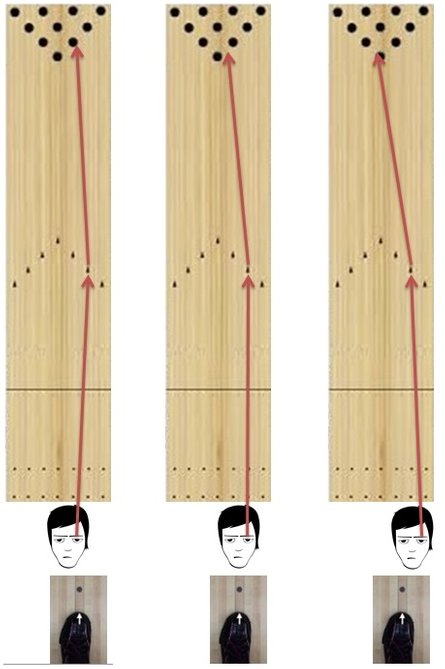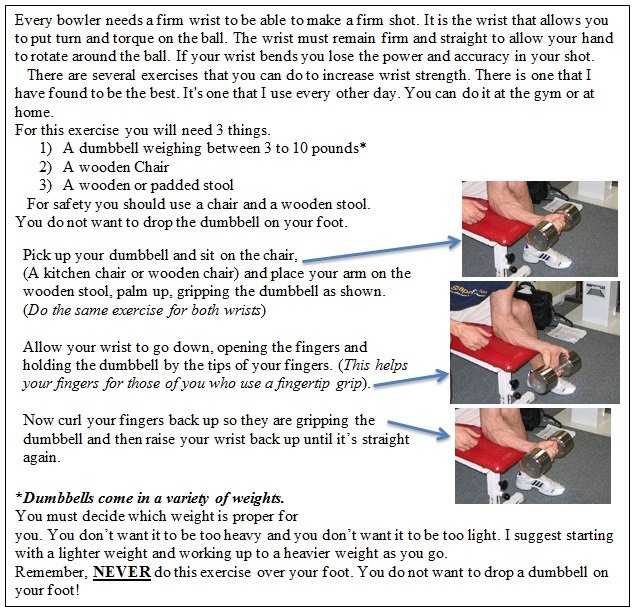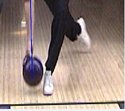Capital Area Bowling Review Our 17th Year!
Tip of the Week
Bowling Tips to help improve your game
Below you will find our top 5 tips for improving your game
"3-6-9 Spare Shooting Method", "A Steady Head for a Steady Shot", "How to Strengthen your Wrist",
"Concentration: The Winning Edge" and "At Home Practice for Consistency"
Tip of the week - 3-6-9 Spare Shooting Method
The spare method we are going to use is the 3-6-9 spare shooting method. For left handed bowlers reverse this method.
For every pin to the LEFT of the head pin you leave, you move to the RIGHT on the approach according to the chart below.
2 Pin – Move 3 boards to the right – Shoot for 2nd arrow - (Your strike target)
4 Pin – Move 6 boards to the right – Shoot for 2nd arrow - (Your strike target)
7 Pin – Move 9 boards to the right – Shoot for 2nd arrow - (Your strike target)
5 Pin – Do not move – Shoot for 2nd arrow - (Your strike target)
8 Pin – Move 1 board to the right – Shoot for 2nd arrow - (Your strike target)
Based on the amount of oil on the lane you may need to adjust the move by a board or two but for most normal lane conditions this method will work perfectly.
For spares on the right side of the lane for right handers there is a slight variation of the 3-6-9 method.
For the 3 Pin – Move 3 boards to the left – Shoot for 2nd arrow. - (Your strike target)
Here’s where this method has to be modified.
For the 6 Pin – Move 8 boards to the left – Shoot for 3rd arrow
9 Pin – Move 9 boards to the left – Shoot for 3rd arrow
Again, based on the oil pattern of the lane you may have to make adjustments. That is what practice is for. To learn the lane conditions and what will work that night.
Now for the Dreaded 10 pin!
Everyone hates the 10 pin (or 7 pin for you lefties). It’s the most frustrating leave in bowling because usually when you leave a 10 pin you made a perfect (or so it seemed) shot. It’s also the only pin that has that magnetized (or so it seems) gutter that draws the bowling ball over the edge!
The most consistent way to make the 10 pin is to NOT hook the ball. I move 16 boards to the left of center dot and roll my ball over the center arrow directly at the 10 Pin with no turn on the ball. Flatten out your wrist (sort of like throwing a horse shoe
(Palm up with palm and fingers horizontal to the flat bowling lane))
and extend your arm straight out toward the 10 pin (almost like you
are reaching out to pick it up).
This may take some practice but making that 10 pin
will improve your game.
10 pin spare shot release.
Proper Perspective - A Steady Head for a Steady Shot
One of the most important aspects of your approach in bowling is to maintain a steady, level, nonmoving head. If you move your head two things will happen.
(1) You will lose sight of your target. If your head moves up or down, your target (the arrow) will move up and down and it will be that much more difficult to accurately hit that arrow.
(2) If you move your head left or right, the angle that you throw the ball to get to the arrow will change. You may hit the arrow but the angle may have changed so you will not hit the pocket.
To the left are some graphics that will illustrate this point.
The very left one shows the bowlers head to the left. The ball misses the pocket to the right.
The middle one shows the bowlers head lined up with his target and the ball hits the pocket.
The far right one shows the bowlers head a little to the right. The ball hits high. His feet never changed but his head did there by making the mark appear to move which in turn caused him to roll the ball at a different angle.
If you are hitting your mark and the ball is not going where you think it should, possibly after you initially line up with your target, as you do your approach your head is moving right or left which will change the trajectory of the shot.
A simple illustration to do yourself.
Hold your finger up to an object a few feet in front of you and line your finger up dead center on that object. Now without moving your finger, move your head a few inches to the left and then a few inches to the right. Do you see how that object appeared to move? If that was your mark and you were rolling your bowling ball you would get a different finishing point (the point where your ball hits the pins) with your bowling ball. It is extremely important to keep your head as steady as possible through your approach and swing. If you move your head as you roll the ball the target will move and your shot will not be true.
Proper Wrist Exercises for a firmer shot
A Final Thought
You want to alternate between hands. Do 12 reps with your right hand, then 12 with your left hand. Repeat once or twice, as you feel comfortable with. Do not overdo it. Consistency is the key. Do this daily and you will notice a difference.
It is always recommended that you check with your doctor before beginning any exercise.








